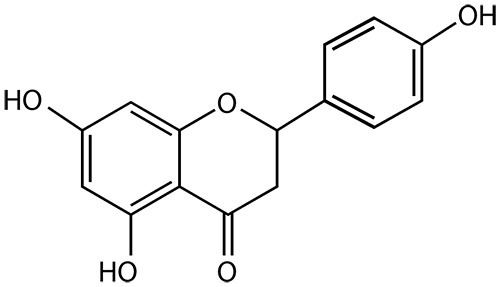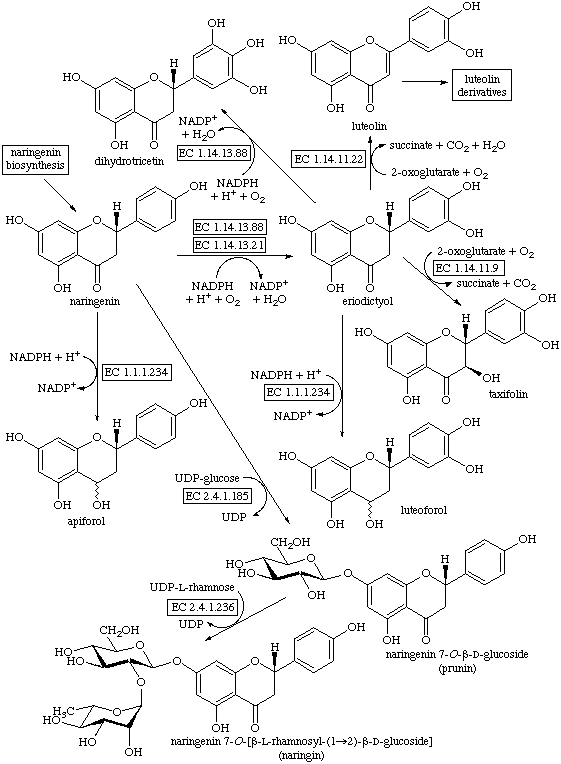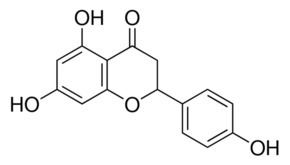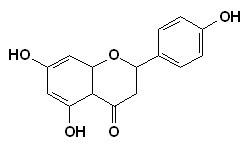Formula C15H12O5 CAS ID 480-41-1 | Molar mass 272.257 g/mol | |
 | ||
Hepatitis c alternative naringenin
Naringenin is a flavanone, a type of flavonoid. It is the predominant flavanone in grapefruit.
Contents
- Hepatitis c alternative naringenin
- How to say naringenin high quality voices
- Potential biological effects
- Metabolism
- Biodegradation
- References
How to say naringenin high quality voices
Potential biological effects

Naringenin has been shown to have an inhibitory effect on the human cytochrome P450 isoform CYP1A2, which can change pharmacokinetics in a human (or orthologous) host of several popular drugs in an adverse manner, even resulting in carcinogens of otherwise harmless substances. The National Research Institute of Chinese Medicine in Taiwan conducted experiments on the effects of the grapefruit flavanones naringin and naringenin on CYP450 enzyme expression. Naringenin proved to be a potent inhibitor of the benzo(a)pyrene metabolizing enzyme benzo(a)pyrene hydroxylase (AHH) in experiments in mice.
Naringenin has also been shown to reduce oxidative damage to DNA in vitro and in animal studies.

Naringenin has also been shown to reduce hepatitis C virus production by infected hepatocytes (liver cells) in cell culture. This seems to be secondary to naringenin's ability to inhibit the secretion of very-low-density lipoprotein by the cells. The antiviral effects of naringenin are currently under clinical investigation.
Naringenin seems to protect LDLR-deficient mice from the obesity effects of a high-fat diet.

Naringenin lowers the plasma and hepatic cholesterol concentrations by suppressing HMG-CoA reductase and ACAT in rats fed a high-cholesterol diet.
It also produces BDNF-dependent antidepressant-like effects in mice.

Like many other flavonoids, naringenin has been found to possess weak activity at the opioid receptors. It specifically acts as a non-selective antagonist of all three opioid receptors, albeit with weak affinity.
Metabolism
The enzyme naringenin 8-dimethylallyltransferase uses dimethylallyl diphosphate and (−)-(2S)-naringenin to produce diphosphate and 8-prenylnaringenin.
Biodegradation
Cunninghamella elegans, a fungal model organism of the mammalian metabolism, can be used to study the naringenin sulfation.

